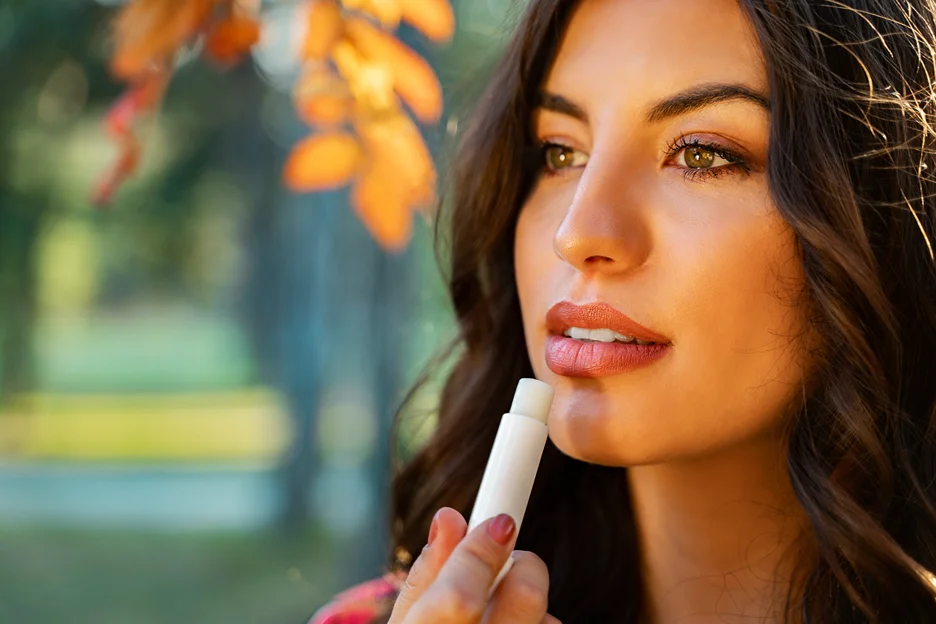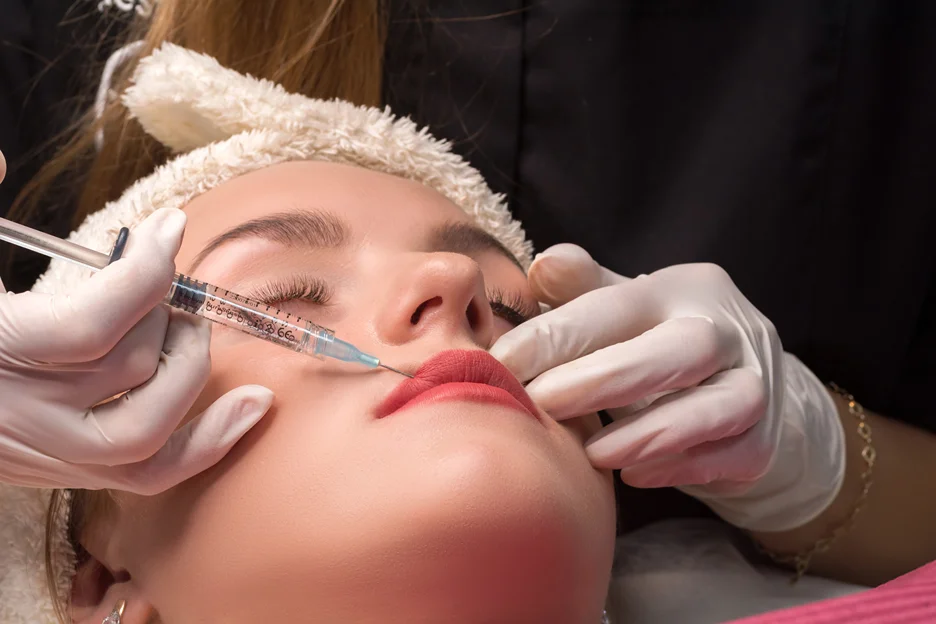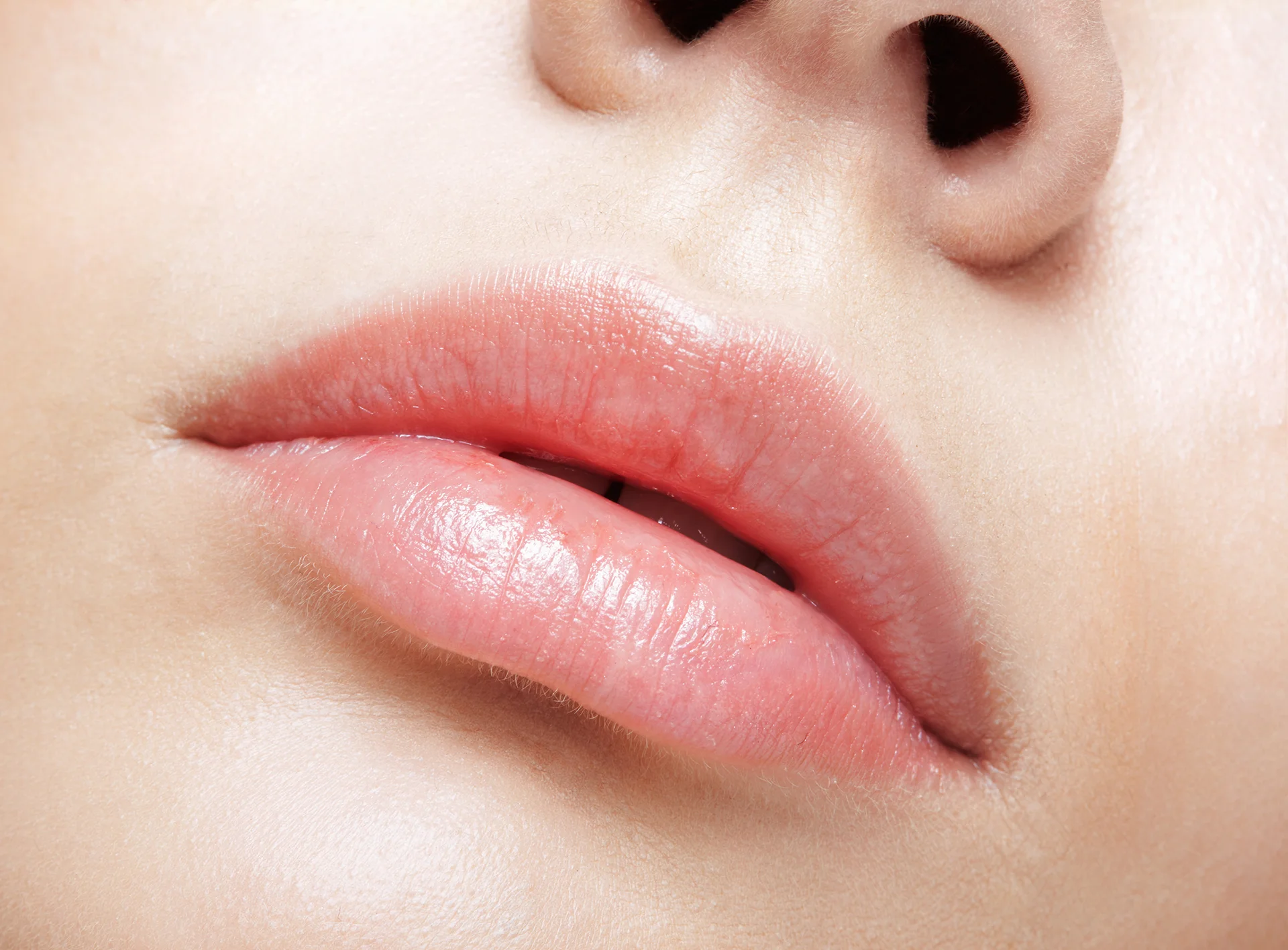Proven Tips to Minimize Swelling After Lip Fillers
At Bellava MedAesthetics & Plastic Surgery Center, we understand that swelling is a common side effect after lip filler injections.
While swelling is a normal part of the healing process, we also know that patients are eager for the swelling to go down as quickly as possible.
In this comprehensive guide, our expert providers at Bellava MedAesthetics will walk you through several effective methods to help reduce swelling after your lip filler appointment.
We will also explain what causes the swelling, provide tips to minimize swelling, and advise when to consult your provider if swelling persists.
What Causes Swelling After Lip Fillers
Swelling after lip fillers is caused by the hyaluronic acid gel that is injected into the lips. This injectable filler adds volume to the lips, but also causes inflammation as the lips adjust to the foreign substance.
The swelling occurs because the hyaluronic acid attracts and binds to water molecules. This leads to edema, which is the medical term for swelling caused by excess fluid trapped in the tissues.
The swelling usually starts shortly after the procedure and peaks at around 24-48 hours. It can last around 5-7 days for most patients. Swelling duration depends on factors like:
- Amount of filler injected
- The specific filler type used
- Individual response to the injections
Swelling is usually more pronounced with the first lip filler treatment as the lips get used to accommodations. It often subsides faster with subsequent touch-up appointments.
Tips to Minimize Swelling After Lip Fillers
While some swelling is inevitable, there are things you can do before and after the procedure to minimize swelling:
- Stay hydrated by drinking lots of water a few days before your appointment. Well-hydrated skin helps reduce inflammation.
- Avoid blood thinners like aspirin, ibuprofen, fish oil, vitamin E, garlic, gingko, and green tea for at least 1 week pre-procedure. These can increase bruising and swelling.
- Quit smoking for a minimum of 3 weeks before and after lip fillers, as nicotine impairs circulation.
- Get lip fillers before an event, not right after. Give your lips 1-2 weeks to settle for optimal results.
- Use Arnica supplements and gel to help control bruising and swelling. But avoid Arnica on broken skin.
- Ice the area right after the procedure to constrict blood vessels and minimize fluid retention.
- Keep your head elevated on 2-3 pillows while sleeping to minimize edema.
- Avoid strenuous exercise like high-intensity workouts for a few days post-procedure to prevent increased blood flow to the lips.
- Stay out of the sun, heat, and cold. Extreme hot or cold temperatures can increase swelling and inflammation.
With proper preparation and aftercare, patients can reduce lip filler swelling and recovery time. Our expert injectors at Bellava MedAesthetics will also use injection techniques to limit swelling.
How to Reduce Lip Filler Swelling: 10 Effective Methods

Our lip filler providers at Bellava MedAesthetics will recommend a personalized post-care routine catered to your concerns.
But in general, here are the most effective methods our clinic advises patients to reduce swelling after lip fillers:
1. Use Cold Compresses
Cold therapy constricts blood vessels, reduces circulation to the lips, and prevents fluid buildup.
- Apply a cloth-covered ice pack or frozen peas to lips for 15 mins every hour initially.
- Use cold metal spoons from the fridge if lips are too sensitive.
- Do this for 2-3 days whenever the opportunity arises.
- Avoid direct ice contact to prevent frost damage to delicate lip tissue.
Cold compresses provide immediate soothing relief while rapidly lowering swelling and inflammation. We recommend this simple solution strongly after lip enhancements.
2. Keep Lips Moisturized
Dehydrated lips retain more fluid. Keep lips moisturized with a gentle, fragrance-free lip balm or Aquaphor. Drink lots of water and avoid licking your lips.
Dryness can cause the lips to crack and delay healing. Proper hydration maintains skin elasticity for improved swelling reduction.
3. Take an Anti-Inflammatory
Over-the-counter non-steroidal anti-inflammatory meds like ibuprofen can help minimize swelling and discomfort. Always follow dosage instructions.
Let your provider know if you have any allergies or take other medications that may interact. Do not take aspirin, herbal supplements, Vitamin E, or fish oil.
4. Apply Arnica Gel or Cream
Arnica montana is an herbal supplement that aids bruising and swelling healing. It comes as an oral supplement, topical gel/cream, and homeopathic pellets.
Gently dab Arnica gel around the lips without irritation 1-3 times a day. It may cause skin sensitivity, so do a patch test first. Avoid broken or irritated skin.
5. Practice Facial Lymphatic Drainage Massage
Gentle lymphatic drainage massage can help stimulate fluid drainage and lip circulation. Here’s how to do it safely:
- Use very light pressure and smooth, upward strokes only.
- Start at the jawline and work downwards toward the clavicle.
- Repeat 2-3 times daily for 5-10 minutes to encourage lymph flow.
- Avoid directly massaging the filler area. Wait 3 days post-procedure.
- Apply a facial oil to minimize friction.
This simple technique moves stagnant fluids through the lymphatic system, gradually lowering lip swelling.
6. Sleep on an Incline
Sleeping flat on your back allows gravity to pool fluids in the head area.
Instead, sleep propped up on 2-3 pillows to allow proper drainage. Keeping the head elevated above the heart encourages circulation away from the face.
It also prevents you from rubbing or smushing lips in your sleep, which can aggravate swelling.
7. Limit Exercise
Vigorous exercise increases blood circulation to impacted areas, worsening inflammation. Avoid strenuous workouts for 3-5 days after the procedure.
However, light physical activity like walking helps promote lymph and water movement out of the lips. Have an easy week of workouts to aid the healing process.
8. Apply Warm Compresses
Whereas cold therapy constricts blood vessels, warm compresses dilate blood vessels to boost healthy circulation.
After the first 48 hours when swelling peaks, try these tricks:
- Soak a clean cloth in warm salt water and apply as a compress for 10-15 minutes.
- Alternate a warm cloth with gentle cool compresses.
- Take a warm shower and let water run on your lips to improve blood flow.
- Use a heating pad on the lowest setting placed near swollen areas.
The increased blood flow reduces fluid buildup and speeds up recovery. Limit this method to 2-3x daily for 10 mins max to avoid aggravating swelling.
9. Massage Swollen Areas
Very gentle massage can help ease congestion and stimulate drainage pathways after the first few days. Here’s how to do it safely:
- Wait at least 72 hours post-procedure before massaging.
- Apply minimal pressure with light tapping or swirling motions.
- Work from the outer edges toward the center of lips.
- Use a clean fingertip or soft cloth to minimize friction.
- Massage for 5 minutes max, 2-3x daily.
- Stop if you feel any pinching or pain.
Consistent, delicate massage may help depleted trapped fluids and improve discomfort. But over-massaging can worsen swelling, so touch lightly.
10. Be Patient
It takes time for the filler material to settle evenly and for your body to absorb excess fluids. Swelling can take 1 to 2 weeks to fully resolve.
Avoid picking at crusts or peeling skin to prevent complications. Follow all post-care directions to optimize results and recovery time.
Temporary swelling is part of the process. Keep up cold and warm compresses, hydration, rest, and gentle massage until it resolves.
Contact Bellava MedAesthetics if you have severe or worsening swelling after 5-7 days.
When to Call Your Provider About Swelling
You should call our office immediately if you experience:
- Swelling that gets worse after 2 days instead of better
- Severe or excessive swelling that feels tight
- Warm, red, and extremely painful swelling
- Swelling spreading beyond the lip borders
- Fever over 101°F
- Pus-like discharge from injection sites
- Lips that are numb/tingling for over 8 hours
These may indicate an infection or complication requiring prompt evaluation by your injector. Don’t hesitate to call or visit our office if anything concerns you during your recovery.
Can I Wear Lipstick After Lip Fillers?
We recommend avoiding lip makeup like lipstick, gloss, and lip liner for 24 hours after the procedure.
The chemicals can irritate sensitive skin and cause dryness or discoloration.
After the first day, you may apply your favorite lip products gently. Use a clean applicator and avoid rubbing or tugging the lips. Be very gentle when removing makeup for the first week of healing.
If lips feel dry or flaky, stick to a hydrating lip balm until skin fully recovers. This prevents dragging on delicate tissue. We suggest using lip liner instead of lipstick for crisp definition without irritation.
When Will Lip Swelling Completely Subside?
Most patients see the majority of lip swelling resolve within 7-10 days after hyaluronic acid fillers. Minor residual swelling may linger up to 2 weeks before lips settle into their final enhanced shape.
With optimal aftercare and swelling reduction methods, you should see a big improvement after just 3-5 days. But the final beautiful results are visible once all swelling and bruising fully dissipates after 10-14 days.
How quickly swelling resolves also depends on factors like how much filler was injected, the injection sites, and your body’s response. At Bellava MedAesthetics, we will always discuss realistic timelines for your individual procedure at your consultation.
Maintain Results with Follow-Up Appointments
Hyaluronic acid lip fillers gradually absorb over 6-12 months, so you’ll need maintenance injections to uphold your perfect pout long-term.
Our skilled providers will advise when to schedule follow-up filler appointments during your initial lip consultation. We use advanced techniques to maximize and extend your enhancements.
Visit Bellava MedAesthetics to learn more about financing your lip fillers and our exclusive membership program.
Consult a Lip Filler Expert

We hope this guide helps you minimize discomfort and recovery time after your lip filler procedure. While some swelling is unavoidable, our tips and tricks can help control it.
For customized advice and to create your ideal lip shape using advanced filler techniques, visit the lip enhancement experts at Bellava MedAesthetics.
Our board-certified providers specialize in cosmetic injectables and develop personalized plans to safely achieve your aesthetic goals.
Book your lip filler consultation at our luxurious Westchester office and rejuvenate your pout with natural-looking, long-lasting results. Contact us today to schedule your appointment!
Frequently Asked Questions About Reducing Swelling After Lip Fillers
Still have questions about managing swelling after lip enhancements? Here are answers to some common concerns our patients have:
How soon after lip injections can I ice my lips?
Start icing immediately – place an ice pack or cold compress on your lips as soon as your appointment is over to minimize initial swelling and bruising. Continue for the first 2-3 days whenever possible.
When should I use warm instead of cold compresses?
Use cold in the first 48 hours to constrict blood vessels. After this peak swelling period, alternate warm and cool compresses to improve circulation.
Is massaging my lips after filler a good idea?
Very gentle massage in a swirling pattern may help stimulate fluid drainage after 3 days. But over-massaging too soon can worsen swelling. Touch lightly if massaging.
What’s better for swelling: hot or cold compress?
Cold is better initially to reduce fluid buildup. But switching to warm after 2 days brings increased blood flow to help dissipate remaining swelling. Use both for best results.
Will drinking lots of water help lip filler swelling go down?
Yes. Staying hydrated keeps your lips from becoming dry and inflamed. Drink lots of water and use a moisturizing lip balm. Dehydration can worsen swelling.
Should I elevate my head to reduce lip swelling?
Yes, prop your head on a few pillows so it’s above your heart. This helps fluids drain away from the swollen lip area at night.
Can I take Arnica and ibuprofen together for swelling?
It’s best to avoid combining them. Ibuprofen alone is sufficient in most cases. If using Arnica, check for interactions. Never exceed dosage instructions.
When should I worry about severe or worsening lip swelling?
Contact your provider if swelling gets worse after 2 days, spreads beyond your lips, or is warm, red and painful. This may indicate an infection or other issue needing evaluation.
Is lip swelling normal for weeks after fillers?
Swelling that lasts longer than 10-14 days is not normal. Call your injector for advice if swelling persists beyond 2 weeks without gradual improvement.
How can I minimize bruising and swelling with future lip injections?
Avoid blood thinners for 1 week before, stay hydrated, use Arnica, and opt for smaller amounts of filler spaced 4 weeks apart instead of larger single doses.
Will drinking alcohol after lip fillers worsen swelling?
Yes. Avoid alcohol for at least 3 days as it can dilate blood vessels and worsen inflammation. Pain meds and alcohol also have negative interactions.




